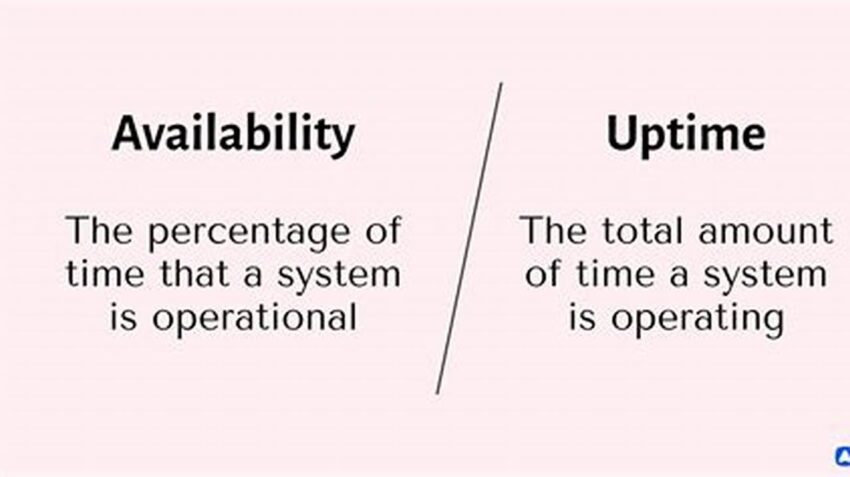System availability is a critical aspect of any online service or digitally-driven business. A clear comprehension of how availability is measured and the factors influencing it is essential for maintaining user satisfaction, operational efficiency, and business continuity. This guide explores the core concepts related to measuring system availability and provides practical insights for ensuring optimal performance.
Point 1: Defining Availability
Availability represents the percentage of time a system remains operational and accessible within a given period. It is a key performance indicator (KPI) directly impacting user experience and revenue generation.
Point 2: Calculating Availability
Availability is typically calculated using a simple formula based on downtime and total time. Understanding this calculation allows for accurate tracking and reporting of system performance.
Point 3: The Impact of Downtime
Downtime, the period during which a system is unavailable, can lead to significant financial losses, reputational damage, and customer churn. Minimizing downtime is paramount.
Point 4: Planned vs. Unplanned Downtime
Differentiating between planned and unplanned downtime helps in accurately assessing system reliability and identifying areas for improvement. Planned downtime includes maintenance activities, while unplanned downtime results from unforeseen failures.
Point 5: Service Level Agreements (SLAs)
SLAs define the minimum acceptable level of availability guaranteed to users. Understanding and meeting SLA requirements is crucial for maintaining customer trust.
Point 6: Monitoring and Alerting
Robust monitoring systems and timely alerts are essential for proactively identifying and addressing potential availability issues before they impact users.
Point 7: Redundancy and Failover Mechanisms
Implementing redundancy and failover mechanisms ensures that systems can continue operating even in the event of component failures, enhancing overall availability.
Point 8: Disaster Recovery Planning
A comprehensive disaster recovery plan outlines procedures for restoring system functionality after major disruptions, minimizing downtime and data loss.
Point 9: Regular Maintenance
Scheduled maintenance activities, while contributing to planned downtime, are crucial for preventing unexpected outages and ensuring long-term system stability.
Point 10: Continuous Improvement
Regularly reviewing availability metrics and implementing improvements based on data analysis contributes to ongoing optimization of system performance and reliability.
Tip 1: Invest in robust monitoring tools.
Comprehensive monitoring provides real-time insights into system performance and allows for proactive identification of potential issues.
Tip 2: Implement redundancy and failover mechanisms.
Redundant systems and automated failover processes ensure continued operation even during component failures.
Tip 3: Develop a comprehensive disaster recovery plan.
A well-defined disaster recovery plan minimizes downtime and data loss in the event of major disruptions.
Tip 4: Conduct regular maintenance and testing.
Proactive maintenance and thorough testing help prevent unexpected outages and ensure long-term system stability.
What metrics are used to measure availability?
Key metrics include uptime, downtime, Mean Time Between Failures (MTBF), and Mean Time To Repair (MTTR).
How can downtime be minimized?
Strategies include implementing redundancy, robust monitoring, and proactive maintenance practices.
What is the importance of a disaster recovery plan?
A disaster recovery plan outlines procedures for restoring system functionality after major disruptions, minimizing data loss and downtime.
How can availability be improved over time?
Continuous monitoring, data analysis, and implementing improvements based on identified weaknesses contribute to ongoing availability optimization.
What is the relationship between availability and user experience?
High availability directly translates to a positive user experience, fostering trust and loyalty.
How does availability impact business revenue?
System downtime can lead to significant revenue loss, making high availability crucial for business success.
Ensuring high system availability is a continuous process requiring proactive planning, robust infrastructure, and ongoing monitoring and improvement. By understanding the core concepts and implementing best practices, organizations can minimize downtime, maintain user satisfaction, and achieve optimal business performance.

